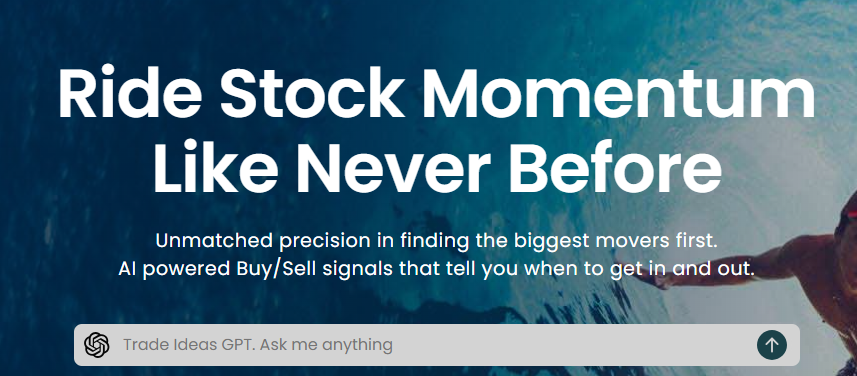20 Good Facts For Choosing AI Stock Investing Analysis Websites
20 Good Facts For Choosing AI Stock Investing Analysis Websites
Blog Article
Top 10 Tips For Assessing Ai And Machine Learning Models Used By Ai Platforms For Analyzing And Predicting Trading Stocks.
It is crucial to evaluate the AI and Machine Learning (ML) models utilized by stock and trading prediction platforms. This will ensure that they deliver accurate, reliable and practical insight. Models that are poor-designed or over-hyped can lead to inaccurate forecasts as well as financial loss. Here are 10 of the most useful strategies to help you assess the AI/ML model used by these platforms.
1. Understanding the purpose of the model and the way to approach
Clarity of purpose: Determine if this model is intended for short-term trading or long-term investment, sentiment analysis, risk management, etc.
Algorithm disclosure: Find out whether the platform is transparent about the algorithms it is using (e.g. neural networks and reinforcement learning).
Customizability: Determine if the model can be tailored to your specific trading strategy or risk tolerance.
2. Assess model performance by analyzing the metrics
Accuracy: Verify the accuracy of the model in forecasting future events. However, don't solely depend on this measurement as it may be misleading when used with financial markets.
Accuracy and recall - Examine the ability of the model to detect true positives and minimize false positives.
Risk-adjusted return: Examine if the model's predictions result in profitable trades after accounting for risk (e.g., Sharpe ratio, Sortino ratio).
3. Make sure you test the model by using Backtesting
Performance historical: Test the model with historical data to see how it would perform under previous market conditions.
Tests on data not being used to train To avoid overfitting, try testing the model using data that was not previously used.
Scenario Analysis: Review the model's performance under various market conditions.
4. Make sure you check for overfitting
Signs of overfitting: Search for overfitted models. These are models that do extremely good on training data but poor on data that is not observed.
Regularization techniques: Determine the application uses methods like regularization of L1/L2 or dropout to avoid overfitting.
Cross-validation: Make sure that the platform employs cross-validation in order to determine the generalizability of the model.
5. Examine Feature Engineering
Relevant features: Find out whether the model is using important features (e.g. price, volume and sentiment data, technical indicators macroeconomic factors, etc.).
Feature selection: Ensure the system chooses characteristics that have statistical significance, and eliminate irrelevant or redundant data.
Dynamic feature updates: Determine whether the model is able to adapt to changes in market conditions or the introduction of new features in time.
6. Evaluate Model Explainability
Readability: Ensure the model gives clear explanations of its predictions (e.g. SHAP values, importance of particular features).
Black-box model Beware of platforms that make use of models that are overly complex (e.g. deep neural network) without describing methods.
User-friendly Insights: Make sure that the platform provides an actionable information in a format traders are able to easily comprehend and use.
7. Assess the Model Adaptability
Market changes. Check if the model can adjust to changes in the market (e.g. a new regulation, a shift in the economy, or a black swan event).
Continuous learning: Check if the platform updates the model frequently with new data in order to improve the performance.
Feedback loops. Make sure that the model incorporates the feedback from users and real-world scenarios in order to improve.
8. Be sure to look for Bias, Fairness and Unfairness
Data bias: Make sure the data used for training is representative of the marketplace and free of biases.
Model bias: Verify whether the platform monitors the biases in the model's prediction and if it mitigates them.
Fairness: Make sure that the model does favor or disfavor specific trade styles, stocks, or sectors.
9. Evaluation of the computational efficiency of computation
Speed: Determine if the model can generate predictions in real-time, or with minimal latency, specifically for high-frequency trading.
Scalability: Find out if the platform is able to handle large amounts of data with multiple users, without any performance loss.
Resource utilization: Find out whether the model makes use of computational resources effectively.
Review Transparency, Accountability, and Other Problems
Model documentation - Ensure that the platform has detailed information about the model, including its architecture, training processes, and limitations.
Third-party auditors: Examine to determine if a model has undergone an audit by an independent party or has been validated by an outside party.
Error handling: Determine that the platform has mechanisms to identify and rectify mistakes or errors in the model.
Bonus Tips
User reviews and Case Studies User reviews and Case Studies: Read user feedback and case studies to assess the performance in real-world conditions.
Trial period for free: Try the accuracy and predictability of the model with a demo, or a no-cost trial.
Support for customers: Make sure the platform provides a solid assistance to resolve the model or technical issues.
By following these tips You can easily evaluate the AI and ML models on stock prediction platforms and ensure that they are reliable as well as transparent and in line with your trading goals. Check out the top rated this site for blog info including ai stock trading app, market ai, ai trading tools, chatgpt copyright, investing ai, ai stocks, best ai trading software, ai for investing, incite, best ai trading software and more.
Top 10 Tips To Assess The Risk Management Of Ai Stock Analysing Trading Platforms
Risk management is a key element of any AI trading platform. It assists in protecting your investment and minimize the possibility of losses. A platform with robust risk management tools can assist you in navigating market volatility and make well-informed decisions. Here are the top ten tips for assessing risk management capability of these platforms.
1. Evaluate Stop-Loss and Take-Profit Features
Level that you can customize: You should be able customize the take-profit/stop-loss levels of your individual trades and strategies.
Find out if you can utilize trailing stops. These automatically adjust when market conditions shift in your favor.
Guaranteed stops: Check whether the broker offers guaranteed stop-loss orders, which guarantee that your position will be closed at the price you specified even in markets that are volatile.
2. Useful Tools for Assessing Position Size
Fixed amount. Be sure to have the option of defining your positions' sizes in terms of a fixed dollar amount.
Percentage of Portfolio Decide whether it is possible to define the size of your position as a percentage of your total portfolio in order to manage risks proportionally.
Risk-reward Ratio: Verify that the platform permits setting up individual risk-reward levels.
3. Make sure you have Diversification Support
Multi-asset trading : Ensure that the platform permits you to trade across a variety of types of assets, including stocks, ETFs as well as options. This can help you diversify your portfolio.
Sector allocation: Check whether your platform provides tools to manage and monitor the exposure to sectors.
Diversification in geography. Examine if your platform allows you to trade in international markets. This can assist in spreading the risk of geographic.
4. Evaluate Margin and Leverage Controls
Margin requirement: Ensure that the platform is clear about any margin requirements for leveraged trades.
Check to see if you can set limit on leverage to limit your risk exposure.
Margin call: Ensure that the platform has timely notifications for margin calls. This will help keep accounts from being closed.
5. Assessment Risk Analytics and reporting
Risk metrics: Ensure that the platform provides key risk metrics for your portfolio (e.g. Value at Risk (VaR) Sharpe ratio and drawdown).
Scenario analysis: Verify that the platform is able to create different scenarios for the market to determine the risks.
Performance reports: Ensure the platform offers you comprehensive information on the performance of your investments, including returns that are risk-adjusted.
6. Check for Real-Time Risk Monitoring
Monitoring your portfolio: Ensure that the platform allows you to monitor your portfolio in real time.
Alerts: See if you receive real-time alerts for events that are at risk (e.g. stop-loss triggers and margin breaches).
Look for dashboards with customizable options that provide a comprehensive overview of your risk profile.
7. Testing of Backtesting and Stress Evaluation
Stress testing: Make sure the platform you use allows you to test your strategies or portfolio under the most extreme market conditions.
Backtesting Check if platform supports backtesting using historical data to evaluate risk and performance.
Monte Carlo: Verify the platform's use of Monte-Carlo-based simulations to assess risk and modeling a range or possible outcomes.
8. Risk Management Regulations: Assess the compliance
Check that the platform satisfies the regulatory compliance requirements (e.g. MiFID II regulations in Europe, Reg T regulations in the U.S.).
Best execution: Make sure that the platform is in line with the best execution methods. This will ensure that trades are executed according to the best price available in order to reduce loss.
Transparency Examine the transparency of the platform and transparency in the disclosure of risks.
9. Verify that the parameters are controlled by the user.
Custom risk rules: Ensure that the platform allows you to create custom risk management guidelines (e.g., the maximum daily loss, or maximum size of the position).
Automated risk management: Make sure that the platform enforces the rules of risk management automatically, based on the pre-defined guidelines.
Manual overrides: Find out whether the platform supports manual overrides for automated risk controls in case of emergencies.
Reviews of User Feedback and Case Studies
User feedback: Review the opinions of users to assess the platform's capability to control the risks.
The case studies or testimonials must demonstrate the platform's ability to manage risk.
Community forums - Check to see if the platform provides a user-friendly community that is active, and where traders can share their risk management strategies.
Bonus Tips
Trial period: You can make use of a demo or a no-cost trial to try out the risk management features of the platform.
Support for customers: Make sure the platform provides a solid support in relation to risk management concerns or questions.
Educational resources: See whether the platform has educational resources or tutorials on best practices in risk management.
These tips will help you evaluate the risk management capabilities offered by AI platform for predicting or analyzing stocks. You can select a platform that will ensure your capital is protected while minimizing potential losses. To ensure that your trading is successful and manage volatile markets, strong risk management tools are vital. See the best stock predictor examples for website recommendations including how to use ai for stock trading, ai stock price prediction, best ai trading platform, free ai tool for stock market india, ai software stocks, ai software stocks, best stock prediction website, ai software stocks, best ai penny stocks, best ai trading platform and more.